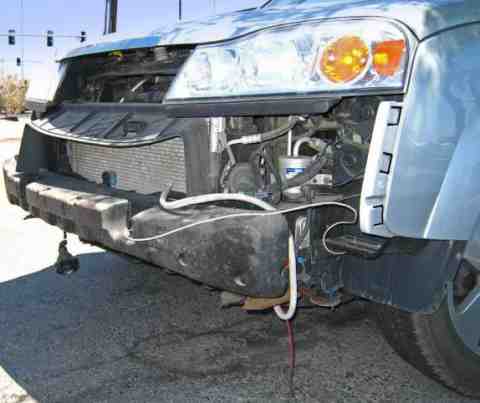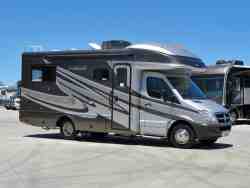[?]Subscribe To This Site
Towing A Car Safely Behind Your
Class C Motorhome
potential breakaway situation?

Custom Search
At issue here is the potential height differential between the Class C Motorhome and the dinghy base-plate and tow bar assembly. Is it possible that, due to misalignment, premature wear can result in the failure of the towing system?
Granted, most of us have taken the time to connect our dinghy to our rig using the appropriate safety equipment, and we feel like we know how to tow a dinghy reasonably well. However, do we all realize the potential damage that can be caused from the natural height disparity between our two vehicles? This subject warrants a bit of attention.
Overlooked Cause And Effect Issue Of
Towing A Car Safely Behind Us
our goal should result in having the tow bar at an angle
parallel to the ground. As a general rule, we should not have
more than a 3" differential in height.
If you do end up with a severe angle of anything over this differential between the vehicles, you may find yourself in a very dangerous situation. A bad angle on a tow bar extending out from the base-plate on a dinghy is easy to see... this sort of misalignment jumps out at you.
along with braking sooner are important aspects of towing a car safely behind a Class C Motorhome.
The hard lessons learned from the time honored practice of towing a car safely have shown that the ball coupler and tow bar need to be parallel to the ground.
Bottom line, if you wait until the last minute or if you find yourself in a position that requires a hard emergency stop, you will be putting great stress on your ball coupling and base-plates... especially if they are not lined up properly.
This is due to the laws of physics. These laws apply when any braking is performed during normal highway driving conditions. Emergency braking will result in an even worse scenario.
Traditional thinking on this is that we want to avoid the coupler prying itself off the ball under stress conditions. This is why we always use safety chains when pulling... trailers and dinghies can, and may, come loose.
Tow Bars May Complicate Issues
However, with the introduction of the modern motorhome mounted and stored tow bars, things sort of changed. It seems that some RVers no longer feel that the angle of the tow bar when towing a car is as important as it used to be.
When motorhome mounted tow bars were just coming on the scene and were new to the industry, the various manufacturers thought that the sky was the limit.

Severe tow bar angles became common. Newer designs were created to help stop the tow bar from separating from the hitch coupler. Everyone liked the idea of having a motorhome mounted tow bar that simply swung out and dropped down on the dinghy base-plates.
It was a simple, effort free way to go. Angle drops at that time could be as much as ten inches... so, why is this a problem?
Truth be told, if we have a height differential of over a couple of inches and we are very conscientious about our braking techniques... that is, we ALWAYS brake slowly and steadily, we probably would not have a catastrophic problem... short term. However, if we must make an emergency hard stop, it could spell T-R-O-U-B-L-E.
What Will Pop?
So we ask, "Why does this matter?" Well, great stress is applied when braking with a dinghy.
Every coach and dinghy set-up on the road today are different. There are a variety of weights, chassis configurations, and a variety of overhang and wheelbase lengths. Even the brakes on a rig can cause different towing challenges... the better the braking system, the quicker you can stop. Even two coaches of the same make and model year can react differently from each other... if one coach is lighter, it can brake quicker.
For illustration purposes, I am going to use an example of a large motorhome towing a car. This motorhome will be approximately 35 feet in length with a 12' overhang past the rear axle. It is going to pull a small, relatively light vehicle of around 3,000 lbs. This set up will have a 6" differential between the dinghy and the motorhome... the motorhome's trailer hitch is 6" above the car's base-plate.
A six inch differential between the dinghy's base-plate and the motorhome's receiver does not seem to be excessive. It may appear to be harmless... but don't let it fool you. A light breaking will result in an increase of 4 inches of travel height on the back of this motorhome. Therefore, this will cause the height difference to change from 6 inches to 10 inches.
The laws of cause and effect will come into play here. Believe it our not, this 10 inches of total change represents only a one-degree change in the angle of the coach and your dinghy.
Let's consider this... what we see happening here is that when braking, the nose of the coach goes down compressing the front suspension. At the same time, the rear of the coach will rise an equal distance. While the motorhome's rear end is rising, the dinghy's front end is wanting to go down.
This puts a reasonable amount of stress on the brakes, various suspension components, and tire alignment of both the motorhome and the towed dinghy. However, the temporary height differential will put an enormous amount of stress on the tow bar/coupler and base-plate assemblies. This repeated action over time can cause component failure.
Now, as our braking situation progresses to a moderate braking scenario, we can see the towed vehicle opposing or gaining leverage on the coach by pushing in the downwards direction while the rear of the coach is wanting to rise. In a sense, the 3000 lb dinghy is trying to pull the 14,500 lb vehicle down. All of this stress is exacerbated by the increased height differential, and all of this applied stress is focused at the connection point of the base-plate.
When we brake hard, it results in an unsatisfactory attempt at towing a car safely behind us. Our height differential increases to somewhere around six-inches, and we are now looking at a total of 12 inches of total change of angle which is not good for the coupler/tow bar or the base-plate assemblies.
Basically, after rising the 12 inches or so because of the braking effort, the rear of the motorhome will naturally want to settle back in a downward direction. At the same time, the dinghy's front end will want to rise. The angle of the tow bar and the weight of the motorhome pushing down on the dinghy could very well start flexing the base-plate installation points.
A lot of variables come into play here. Depending on the distance between the mounting points and the base-plate attachment points, it is possible to develop a significant spike in leverage.
Compliments of http://www.irv2.com/forums/
Dinghy's Bumper... Looks Worse Than It Is
Repeated starts and stops such as these may actually result in overwhelming force and stresses on the base-plate, its hardware, and the frame or uni-body of the vehicle to which it is mounted. Over time this could lead to a fatigue condition in the dinghy's base-plate frame causing it to snap.
I'm not going to get into the specifics on what happens during an emergency stop to avoid hitting Bambi on the highway... I'll let your imagination run with that. I just want you to understand the damage caused by the day in and day out stress that occurs each and every time we brake. The point is, even when we think we are towing a car safely, we may be inflicting damage to our dinghy's base-plate.
Improperly Towing A Car?
So, how do we correct this problem? It may be a simple matter of using a good 4" drop receiver.

There is also a device out there called an immobilizer. A hitch immobilizer can be bolted to the drop receiver and it goes a long way to keeping this receiver from moving around too much.
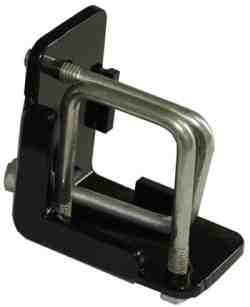
Drop Receivers, Bike Racks, And Towbars From
Rattling In Your Receiver Hitch
Bottom line, it is just so easy to jump into our Class C Motorhomes and simply turn the key and speed off with the CD putting forth our favorite sounds. However, this mentality will, in time, get us into trouble. It is very easy to relax and just go with the flow, but to be truly on the safe side, we will need to be proactive in our understanding of all the ramifications involved with towing a car safely down the road.
Return To Top Of Page
Leave Towing A Car Safely Behind Your Class C Motorhome And Return To Motorhome Dinghy Towing
Leave Towing A Car Safely Behind Your Class C Motorhome And Return To The Class C Motorhome: How To Achieve The Maximum RV Lifestyle!
Your Stories
Onan AC Generator Wouldn't Start
1995 Tioga Montara Had a Leak - Ouch!
A Simple Way To Put An Elecrtrical Thermostat On A Small Space Heater In A Truck Camper!
A Great Destinaton, With An Unexpected Outcome!
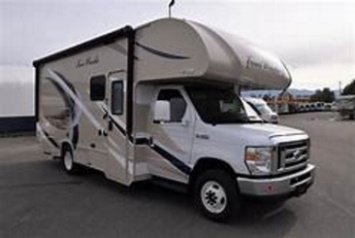
2018 Thor 21F Four Winds Class C Motorhome
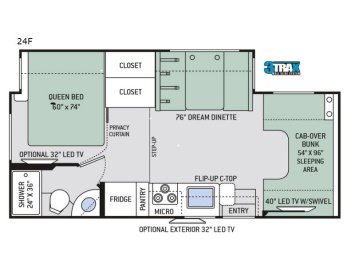
2018 Thor 21F Four Winds Class C Motorhome
2010 Fleetwood Pulse 24D
Class C Motorhome
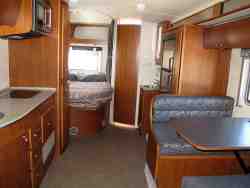
2010 Fleetwood Pulse 24D
Class C Motorhome
Above Graphics Courtesy of:
http://www.DeMartini.com
| Gasoline Prices |





